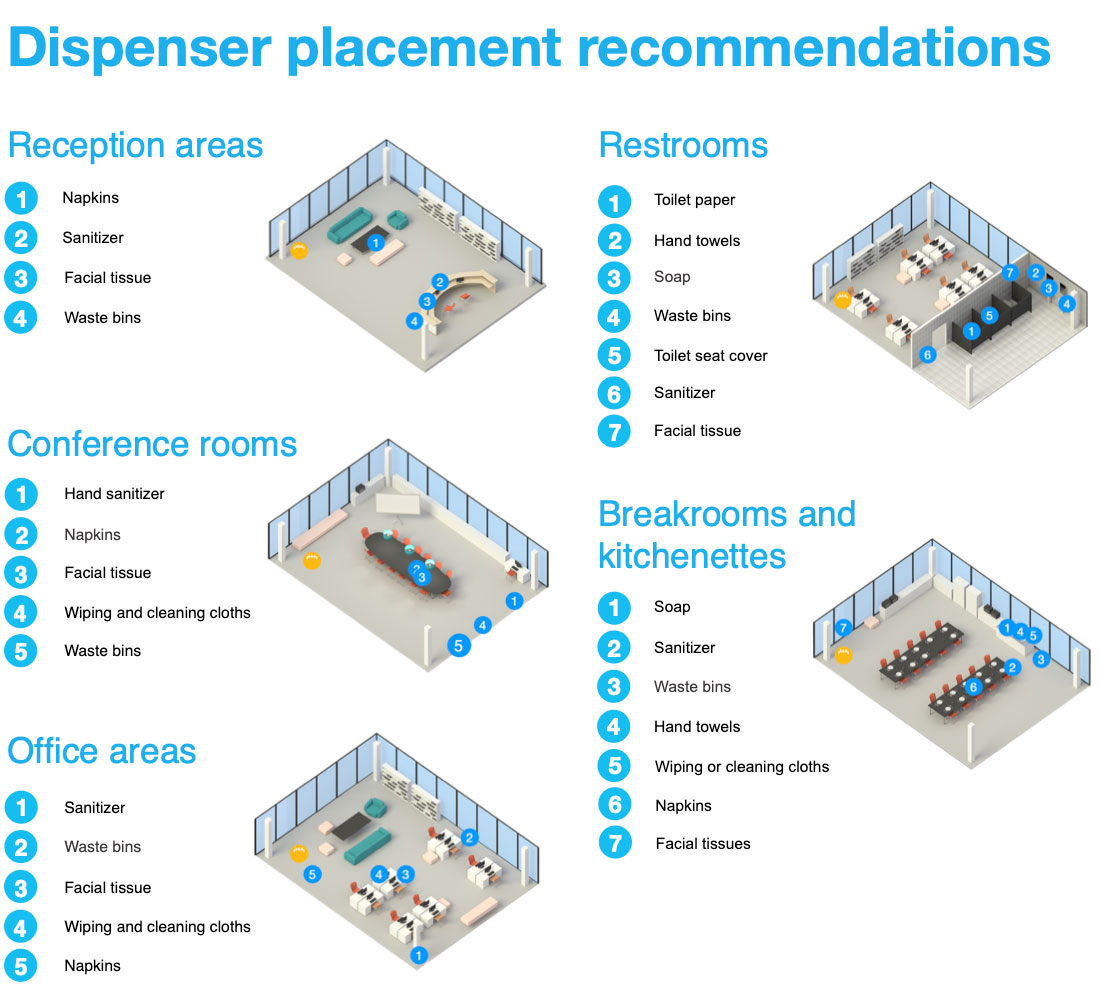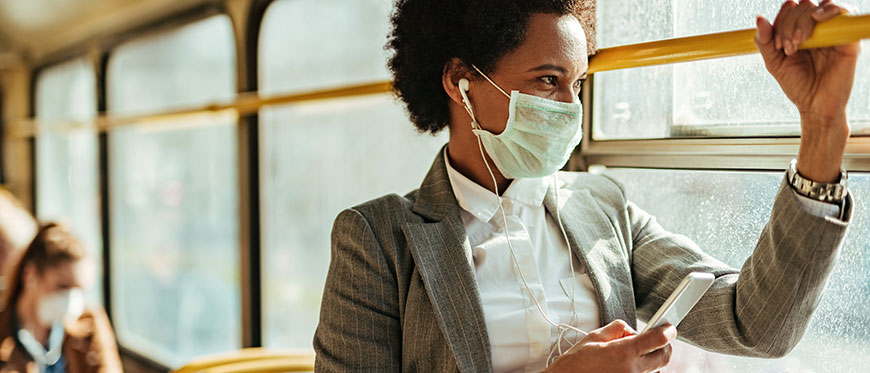A return to “normal” life in North America is slowly coming into focus as the rate of COVID-19 infections drops. Bars and restaurants are reopening, schools are holding in-person classes, and businesses are welcoming employees back to the office. However, changing habits and expectations around safety and cleanliness will have an impact on many aspects of our society for a long time—including work.
According to a survey by commercial real estate giant JLL, the biggest concern workers have in returning to the office isn’t about the workspace at all – it’s a fear of commuting and its potential for increased exposure to the coronavirus.1 While that may seem like a matter totally out of your control as a corporate manager or head of facilities, other findings from the survey indicate that a little creative thinking, and a lot of attention to hand hygiene and deep cleaning, can help make your employees feel safe at work once again.
Creative ways to cut COVID-19 concerns in the office
While you have no control over the crowding or cleanliness on subways, buses and trains, you do have control over both when and where your employees work. That same survey found that twice as many of them would now prefer to work from home at least two days a week (versus how they felt pre-pandemic).1 In addition to increasing remote work options, employees may be open to other ideas, including:
- Staggered schedules: Reduce the density of employees at any one time by setting up staggered in-office schedules. This will make social distancing much easier.
- New workstation orientation and safeguards: Ensure there’s an appropriate distance between desks and seating areas, and consider barriers, such as plexiglass panels, to reduce the spread of droplets and aerosols.
- Limited in-person meetings: Reduce the number of meetings that require employees’ physical presence in one room and ensure social distancing and proper hygiene and cleaning practices.
Step up your cleaning protocols
Commuting, of course, isn’t your employees’ only worry about coming back into your office building. The JLL survey lists the next-most important concern as office cleanliness and the cleaning procedures for buildings and individual office spaces.
It’s critical then, that facility managers make sure they have heightened cleaning and hygiene strategies in place to manage the risk of infection in the office as well as to reassure employees. Increasing the frequency of in-depth cleanings is a start, but today’s circumstances require a strategic approach.
Here are a few tips on cleaning strategies for various office areas:
- Restrooms: Consider using disposable wipes as an alternative to sponges and mops, which can harbor germs. High-capacity hand towel dispensers that release one sheet at a time will reduce surface contamination on towels and the dispensers themselves. Install signage about proper handwashing technique displayed above sinks to remind employees to wash their hands thoroughly for at least 20 seconds.
- Breakrooms and kitchens: Because these areas are often sites for food preparation, they can be heavily soiled and require a planned approach. Grease and oil residue on cooking appliances should be treated with hot water and professional detergents, and all surfaces disinfected. Hand sanitizers should be readily accessible, as should napkins and paper towels to clean up messes. Signage about proper hand hygiene as well as social distancing can remind employees of healthy habits.
- Open areas: Shared surfaces are notorious for hosting contagions. Thoroughly clean and sanitize elevator buttons, whiteboards, printers, telephones, conference rooms and tables, reception tables and chairs, and any other objects in spaces where people congregate. To make sure your maintenance staff doesn’t miss any critical areas, give them a professional cleaning checklist to work from.
- Throughout the office: Installing dispensers for hand sanitizer and disposable wipes in reception, restrooms, breakrooms and kitchens, conference rooms, and shared desk areas make hygiene easier and also serve as a visual reminder. Recommendations for placement are listed on page seven of this free guide. Encouraging employees to wipe down their individual work areas at the end of each day can also cut down on germs.

In this new, more demanding environment, facility managers might also consider digital cleaning solutions to assist with more robust cleaning requirements and standards. Data-driven applications and platforms can help businesses reduce redundant tasks, optimize productivity and efficiency, and achieve a higher standard of hygiene that contributes to safer spaces and greater employee peace of mind.
Smart policies to prevent the spread of COVID-19
In addition to rigorous cleaning, the World Health Organization offers additional ways offices can “stay ahead” of COVID-19, including regular communications that remind and reassure employees of ongoing hygiene and safety protocols, as well as the importance of creating and enforcing policies that keep employees at home when they feel sick or have mild symptoms.2 Everyone should have a reasonable concern for a COVID-19 resurgence or outbreak in the office. It’s a team effort to keep the workplace hygienic and safe. But when it comes to returning to the office, reasonable is the key word.
Tork wants to help facility managers help employees feel good about coming back to work—and to help them return safely. The new downloadable Tork guide, Safe at Work: COVID-19 Office Building Toolkit, is designed to do just that. It’s another way the office hygiene experts at Tork are celebrating and supporting facility managers.
Sources:
1 JLL Workplace Survey: Office workers’ biggest concern? Commuting
2 WHO: Getting your workplace ready for COVID-19
